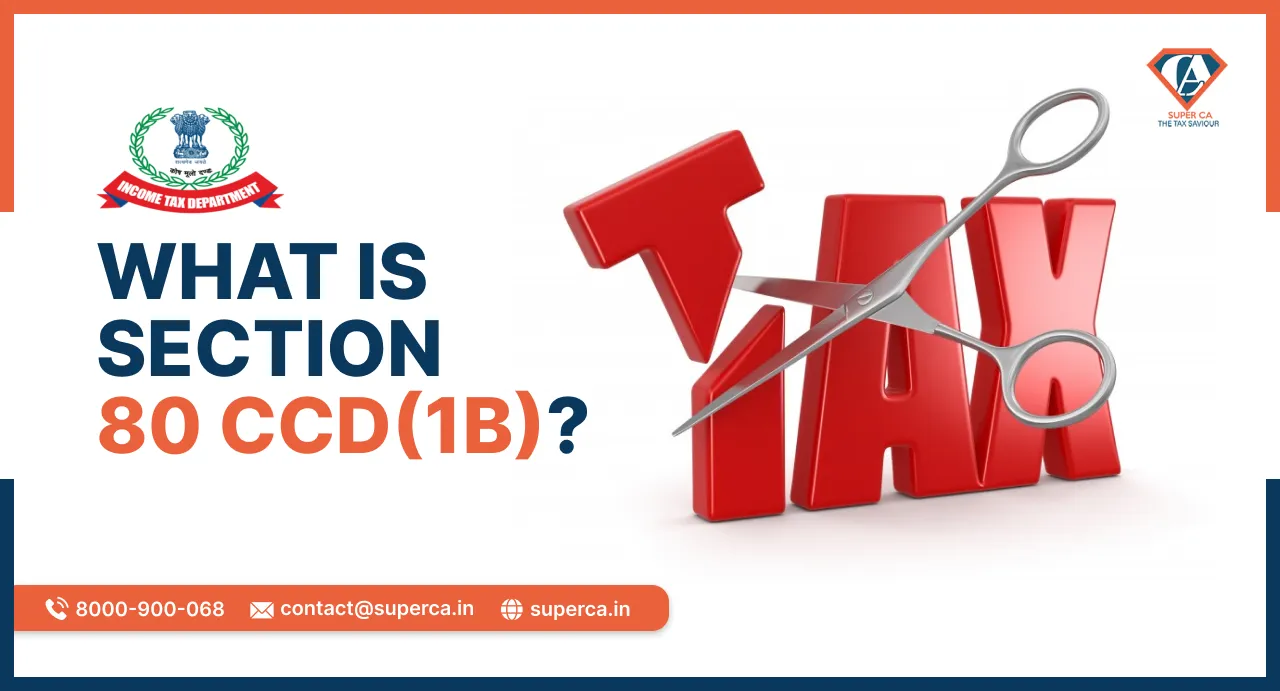What is Section 80 CCD(1B) of Income Tax? Deductions under Section 80 CCD(1B)


The best way to save a notable quantity of your tax liability is to have an additional source of income. There are some provisions of the income tax act that help you in claiming deductions for specific expenses and investments. Section 80 CCD(1B) is also one of these deductions. This deduction applies to those contributions that are made to the NPS. NPS helps you in saving taxes and creates a corpus for retirement. Let us understand Section 80 CCD(1B).
Under Section 80 CCD of Income Tax Act, deductions are provided to individuals on the basis of the contributions that they and their make to the NPS. A maximum deduction of Rs. 1.50 lakh on an annual basis is paid to the NPS under Section 80 CCD(1). Also, a new subsection was introduced under this section represented by 1B. This subsection provides an extra deduction of Rs. 50000 at max to those individuals who make contributions to the NPS. The 80 CCD(1B) deduction of Rs. 50000 is given over and above the deduction of Rs. 1.50 lakh under section 80 CCD(1). This increases the maximum limit for exemption form Rs 1.50 lakh to Rs. 2.0 lakh under this section.
NPS stands for the National Pension System. This is a pension scheme initiated by the government of India for both government and private employees. The NPS is one of the ebst steps taken by the government which helps the individuals in creating a retirement corpus. The money that is deposited in the NPS is used for various purposes like investing in various securities including the equity market. An NPS is seen as one of the cheapest investments which also has an equity exposure. However, there is no guaranteed amount for the returns but they are definitely the highest in the market.
The following are the two types of NPS accounts:
The individuals who are eligible to open an NPS account are as follows:
Some of the main points that need to be kept in mind while proceeding to claim deductions under the Section 80 CCD(1B) are as follows:
The documents required for claiming tax benefits via an NPS under section 80 CCD(1B) are listed below:
Section 80 CCD(1) allows tax deductions of 10% on the contributions that are made to the NPS on their salary(Basic Salary + DA). And the maximum amount of deductions under sections 80 C and 80 CCD can not be more than Rs. 1.50 lakh in the last year.
Also, an additional deduction is granted under Section 80 CCD(1B). This deduction is of Rs. 50000 on the contributions made to the NPS.
80 CCD(2) allows employees to claim a maximum deduction on their NPS contributions of 10% of their salary(14% for those who have a salary from the Central government).
The NPS contributions can also be split into parts and the deductions can be claimed partly in Section 80 C and partly under Section 80 CCD(1B). This is the best way to make the most out of the tax deduction of Rs. 2 Lakhs.

|
Essential LLP Registration Documents: A Complete Checklist for Entrepreneurs Author: Rahul Singh 04 Apr, 2024
|
Get inspired by these stories.